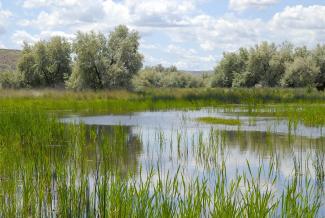Recent judicial and administrative changes to the scope of the Clean Water Act of 1972 (CWA) have major implications for state regulators. In this month’s issue of ELR—The Environmental Law Reporter, ELI Senior Attorney James McElfish examines the existing legal framework for state protection of nonfederal waters and discusses potential impacts of upcoming federal decisions, including the U.S. Supreme Court’s consideration of Sackett v. Environmental Protection Agency in October.

The CWA regulates bodies of water classified as “waters of the United States,” or WOTUS. The WOTUS definition determines whether certain waters are protected from pollutants and disposal of dredge and fill under federal law and the state laws that implement federal requirements. Meanwhile, non-WOTUS waters are only protected under the laws of the states in which they are located.
Shifts in federal interpretations of WOTUS have particularly affected coverage of intermittent or ephemeral streams, wetlands that do not have a continuous surface connection with other waters, desert arroyos, vernal pools, and prairie potholes. McElfish’s article highlights recent actions taken in North Carolina, Arizona, and Ohio that have attempted to respond to gaps in coverage created by definitional changes.
The article then updates a 2013 ELI analysis of legal constraints on the ability of states to develop gap-filling regulations, identifying 27 states that have such limitations. Finally, McElfish discusses how upcoming federal decisions may impact today’s landscape of state water protections. He concludes that our current patchwork of gap-filling, uncertainty, and state inaction cannot adequately protect the country’s interconnected water systems.
ELI is making this featured ELR article available free for download. To access all that ELR has to offer, including the full content of ELR—The Environmental Law Reporter and its archive, you must have a subscription.
To learn more, visit www.elr.info.
